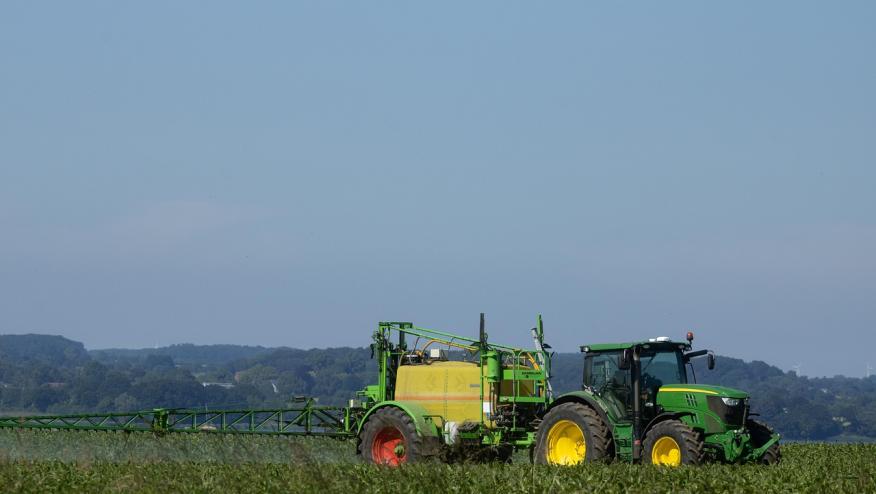Pesticides and Rheumatoid Arthritis? Save

Key Takeaways
- Agricultural herbicides and pesticides have been linked to many diseases among farmworkers, but few studies have examined these risks in women.
- Some that did found higher rates of rheumatoid arthritis (RA) and other rheumatologic diseases in women exposed to agricultural chemicals.
- This study confirmed increased risk for RA with exposure to certain insecticides and fungicides but not most herbicides.
Women exposed to pesticides through farm work or as farmers' wives face increased risk for developing rheumatoid arthritis (RA), a new analysis of Agricultural Health Study (AHS) data indicated.
For a variety of insecticides and fungicides that are or once were commonly used on U.S. farms, adjusted odds for new-onset RA were 1.21 to 2.49 times greater among exposed participants versus the unexposed, according to Christine G. Parks, PhD, MSPH, of the National Institute of Environmental Health Sciences in Research Triangle Park, North Carolina, and colleagues.
But when examining 15 types of herbicides, only one -- metribuzin (with brand names such as TriCor and Glory) -- was associated with increased RA risk, the group reported in Arthritis & Rheumatology.
"In sum, our findings provide robust evidence that some insecticides may contribute to risk of developing RA in women," the researchers wrote. "Further studies are warranted especially for widely used insecticides, such as malathion, carbaryl, and pyrethroids, given ongoing residential and public health uses such as mosquito control, and residential or personal uses such as permethrin-treated clothing."
This is not the first time that agricultural chemical exposure has been linked to RA risk. Such an association was found in one analysis from the Women's Health Initiative, involving household and garden products. AHS data have been used in previous studies as well, which also suggested increased RA risk for women, but with fewer cases (33 and 132) than in the current analysis (477). The new study, too, looked at female participants who may not have applied the chemicals themselves but were spouses of men who did.
Agricultural Health Study participants were recruited in North Carolina and Iowa during 1993-1997, including some 32,000 women who either worked directly on farms or were farmers' spouses. They completed detailed questionnaires, which included questions about contact with 50 pesticides, herbicides, and fungicides, at enrollment and at an initial follow-up conducted in 1999-2003. Additional follow-ups were performed periodically through 2021, with participants asked whether they had been diagnosed with RA or other conditions. Parks and colleagues also reviewed participants' Medicare claims for RA diagnoses.
After excluding participants with insufficient data, the group compared 410 incident RA cases with 21,850 non-cases. "Ever use" of specific chemicals was counted in each of these groups. Associations between RA risk and individual chemicals were adjusted for age, state of residence, education level, smoking history, body mass index, and exposure to other "correlated" pesticides.
With these adjustments, the following pesticides had significant associations with incident RA in female spouses, expressed as odds ratios:
- DDT: 1.89, 95% CI 1.30-2.75
- Lindane: 1.97, 95% CI 1.12-3.47
- Coumaphos: 2.32, 95% CI 1.29-4.19
- Permethrin/pyrethroids on livestock: 1.76, 95% CI 1.16-2.69
Additionally, strong trends falling short of statistical significance were seen for malathion, carbofuran, and permethrin/pyrethroid insecticides on crops.
Among herbicides and fungicides, significant ORs were found for these products among spouses:
- Metribuzin: 2.74, 95% CI 1.67-4.48
- Captan: 1.78, 95% CI 1.13-2.83
- Metalaxyl: 2.49, 95% CI 1.49-4.16
Homeowners might be especially concerned about the findings on permethrin, because exposures could be more substantial than for other house-and-garden chemicals. This compound is commonly used in insect-repellent clothing and can be purchased as a spray for applying to ordinary clothes, tents, and other fabrics at home. Thus, permethrin may be in contact with a person's skin for hours at a time, and regularly throughout mosquito season, which is lengthening in many parts of the country due to climate change.
It should be noted that for the majority of chemicals examined, no difference in use rates was seen between RA cases and non-cases. Also, Parks and colleagues said they "saw no indication that more days per year worked in the past growing season, or years or days per year of general pesticide use increased risk of RA."
How these chemical exposures might contribute to RA risk remains unclear. The overwhelming female predominance in RA epidemiology is often attributed to hormonal factors, and pesticides showing increased RA risk in this study have previously been shown to affect endocrine function. Nevertheless, such a mechanism is still speculative.
Limitations to the current analysis included that pesticide exposure was self-reported and recorded only as "ever used" without quantification. Also, many individual pesticides had been used by only a handful of participants with incident RA.
Source Reference: Parks C, et al "Associations of specific pesticides and incident rheumatoid arthritis among female spouses in the Agricultural Health Study" Arthrit Rheumatol 2025; DOI: 10.1002/art.43318.










If you are a health practitioner, you may Login/Register to comment.
Due to the nature of these comment forums, only health practitioners are allowed to comment at this time.